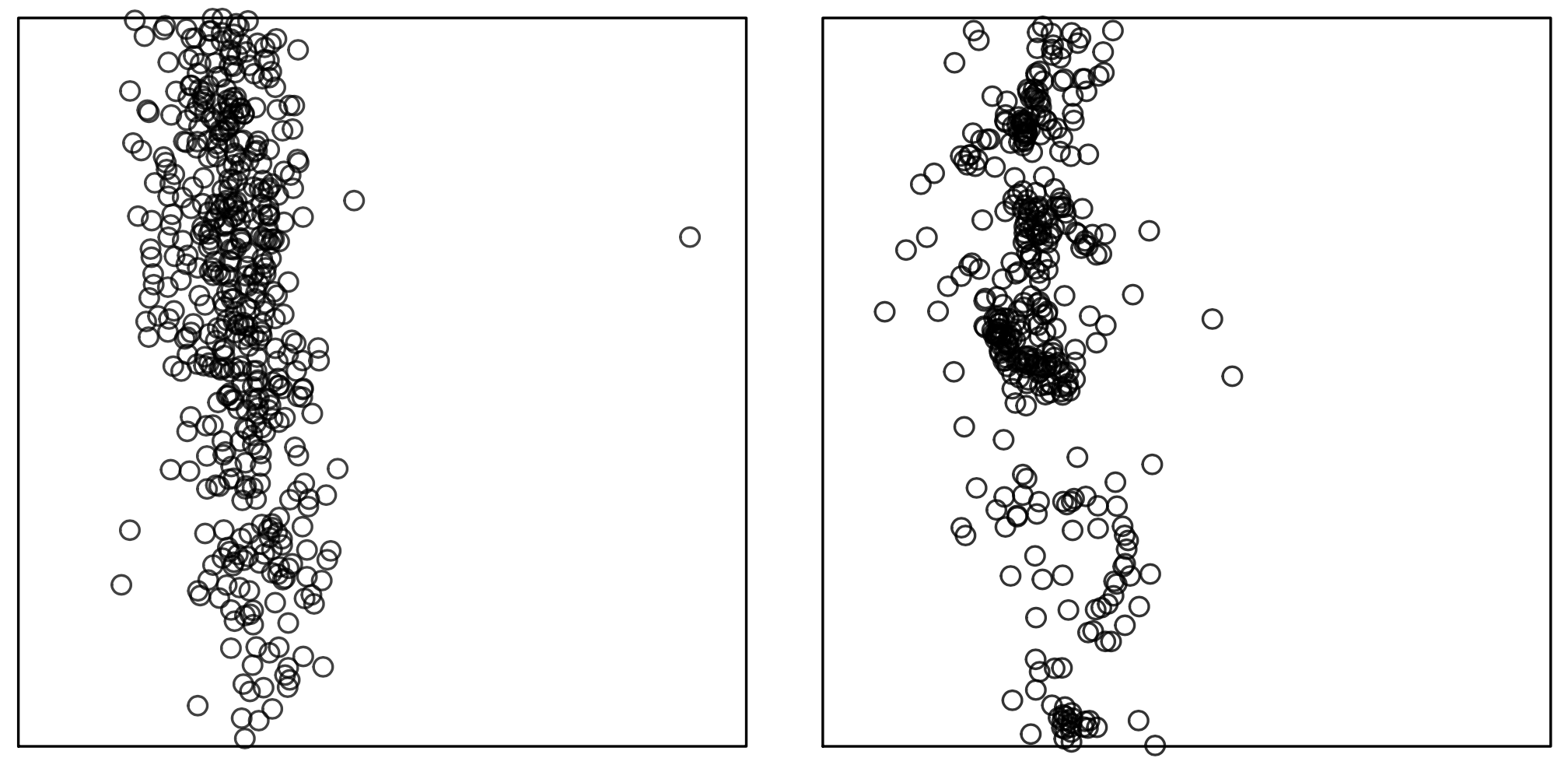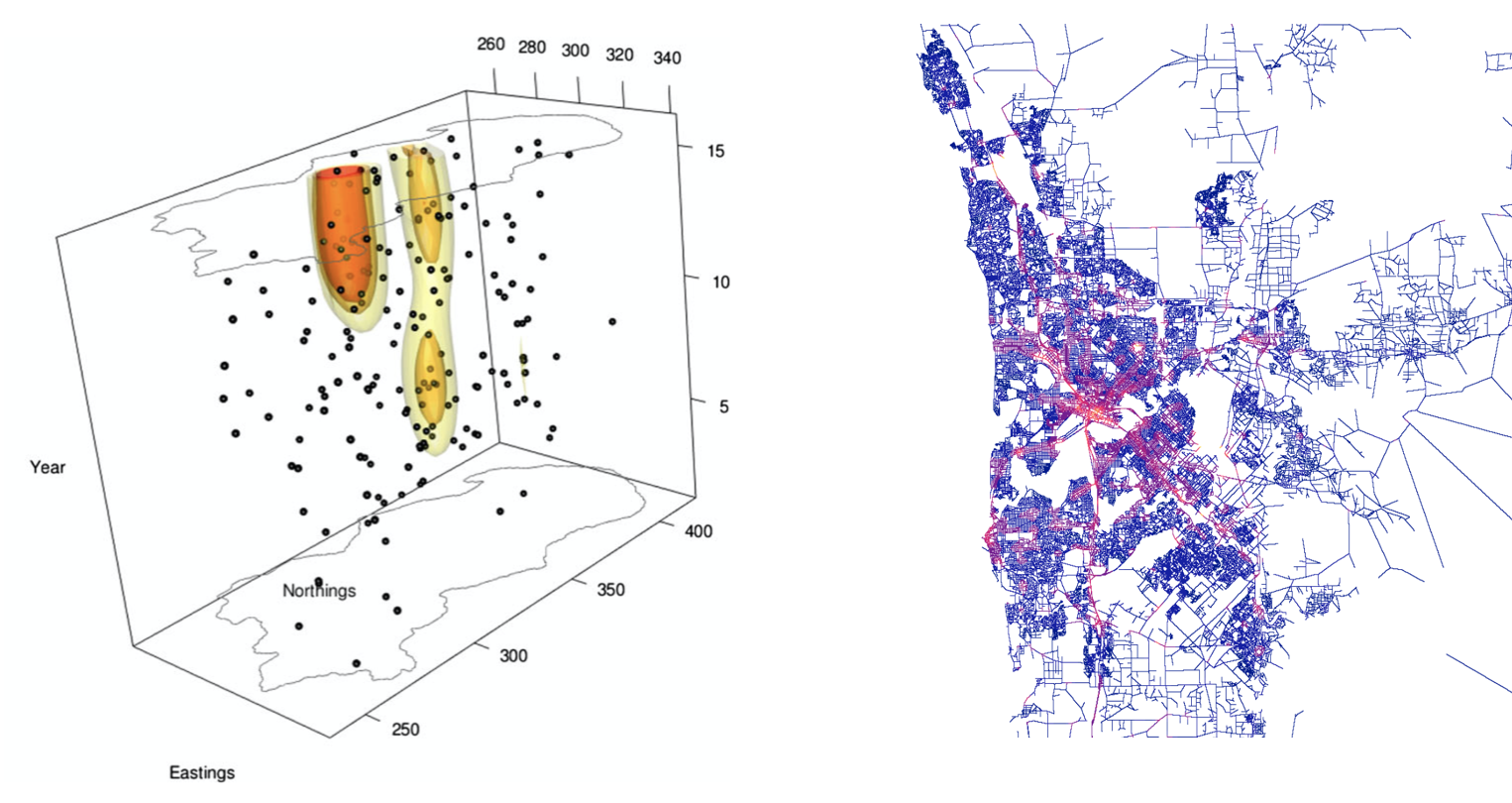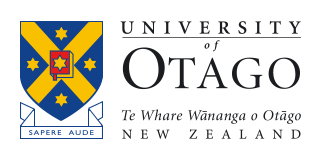|
| Research
The theme underpinning SAGO is to develop statistical theory and methods for the analysis of data with a spatial or spatiotemporal flavour, and to demonstrate the application of relevant techniques when analysing challenging and unique real-world datasets. In so doing, we work on problems dealing with spatial point patterns, with geostatistical datasets, and with other more specialised types of spatial data such as points observed on linear networks. Our collaborations connect to researchers both locally and overseas.
Current pursuits
- Recently, the founding members of SAGO have been awarded a prestigious Royal Society of New Zealand Marsden Fund research grant (19-UOO-191), an excerpt of which can be downloaded here. The core objective of the grant is to develop methodology to allow researchers to better distinguish between deterministic and stochastic effects in spatial point process data. This is notoriously difficult in practice owing to an inherent identifiability problem; see Figure 1 for a simulated example.

Figure 1: A simulated example of spatial point process data with deterministic heterogeneity only (left) and the same deterministic heterogeneity augmented by a positively correlated stochastic effect (right).
- Members of SAGO, including PhD student Anna Redmond, are working with local collaborators at the Dept. of Mathematics and Statistics (Dr Matthew Schofield), the Dept. of Physiology (A/Prof Philip Sheard), and the Otago Medical School (Dr Jon Cornwall) at the University of Otago to develop statistical models for the analysis of muscle fibre data. Specifically, the spatial distributions of fast- and slow-twitch fibre types are hypothesised to be reflective of age- and disease-related conditions, and a sound statistical modelling frameworks is required to properly quantify and understand such binary configurations. Figure 2 shows an example of the kind of data relevant to this pursuit.

Figure 2: A chemically stained cross-section of human muscle tissue (left) and a geometric representation thereof (right). Darkly stained/grey dots represent fast-twitch fibres, lightly stained/magenta dots represent slow twitch fibres.
- SAGO researchers, working in collaboration with geochemists at GNS Science (Dr Adam Martin, Dr Rose Turnbull) and with a leading US-based geostatistical modeller (Prof Sudipto Banerjee), are developing a hierarchical spatial factor model for describing the variation in roughly 60 trace elements recorded over the Otago region of New Zealand. Figure 3 shows the levels of arsenic at 2 distinct depths across 333 sampling sites. Complicating aspects of this analysis include the multi-depth nature of the data; the high dimensionality of the response; and the presence of censored and missing values for many of the individual elements.

Figure 3: Levels of arsenic (in log-parts-per-billion) across the Otago region of New Zealand. Spatial units in kilometres.
- Among others, SAGO collaborates with members of the Spatial Point Patterns and Applications (SPPA) group at Curtin University in Perth, Western Australia (also home to one of our founding members). Current efforts focus on the theory and practice of nonparametric smoothing techniques for the estimation of spatial intensity functions and related quantities in various settings. Figure 4 shows two examples: a spatiotemporally adaptive kernel intensity estimate of Burkitt's lymphoma cases over approximately 15 years in the Western Nile district of Uganda, and a kernel estimate of intensity of road accidents in the metropolitan area of Perth, Australia.

Figure 4: Left -- Burkitt's lymphoma in Uganda -- spatial units in kilometres, temporal units in years, darker isosurfaces indicate higher intensity. Right -- intensity of road accidents in Perth -- visible region is roughly 60km wide, lighter yellow indicates higher intensity.
Publications (from 2019 onwards; SAGO members in bold)
Redmond AK, Davies TM, Schofield MR, Sheard PW (2022) New tools for investigation of muscle fiber-type spatial distributions across histological sections, Submitted for publication.
Baddeley A, Davies TM, Hazelton ML, Rakshit S, Turner R (2022) Fitting spatial cluster process models, Submitted for publication.
Baddeley A, Davies TM, Rakshit S, Nair G, McSwiggan G (2022) Diffusion smoothing for spatial point patterns, Statistical Science 37 1 123-142.
Davies TM, Banerjee S, Martin AP, Turnbull RE (2022) A nearest-neighbour Gaussian process spatial factor model for censored, multi-depth geochemical data, Journal of the Royal Statistical Society Series C (Applied Statistics) 71 4 1014-1043.
Hazelton ML, Davies TM (2022) Pointwise comparison of two multivariate density functions, Scandinavian Journal of Statistics {to appear}.
Baddeley A, Nair G, Rakshit S, McSwiggan G, Davies TM (2021) Analysing point patterns on networks -- a review, Spatial Statistics 42 100435.
Elson R, Davies TM, Lake IR, Vivancos R, Blomquist PB, Charlett A, Dabrera G (2021) The spatio-temporal distribution of COVID-19 infection in England between January and June 2020, Epidemiology and Infection 149 e73 1-6.
Elson R, Davies TM, Jenkins C, Vivancos R, O'Brien SJ, Lake IR (2020) Application of kernel smoothing to estimate the spatio-temporal variation in risk of STEC O157 in England, Spatial and Spatio-temporal Epidemiology 32 100305.
Davies TM, Schofield MR, Cornwall J, Sheard PW (2019) Modelling multilevel spatial behaviour in binary-mark muscle fibre configurations, Annals of Applied Statistics 13 3 1329-1347.
Rakshit S, Davies TM, Moradi MM, McSwiggan G, Nair G, Mateu J, Baddeley A (2019) Fast kernel smoothing of point patterns on a large network using 2D convolution, International Statistical Review 87 3 531-556.
|









